NextEra Energy stock rises after Google power deal report
Hecla Mining Company (NYSE:HL) delivered record financial results in its second quarter of 2025, according to the company’s August 7 presentation. The largest silver producer in the U.S. and Canada reported significant improvements in revenue, cash flow, and debt metrics while announcing a strategic shift at its Keno Hill operation.
Quarterly Performance Highlights
Hecla achieved record sales of $304 million and record adjusted EBITDA of $132.5 million in Q2 2025, a substantial improvement from the $261 million in revenue reported in the previous quarter. The company posted net income applicable to common stockholders of $57.6 million, or $0.09 per share, nearly doubling the $0.05 EPS reported in Q1.
The strong performance was driven by production of 4.5 million ounces of silver and 45,895 ounces of gold, with impressive cost control across operations. Silver cash cost after by-product credits reached ($5.46)/oz with AISC of $5.19/oz, while gold cash cost was $1,578/oz with AISC of $1,669/oz.
As shown in the following summary of quarterly highlights:
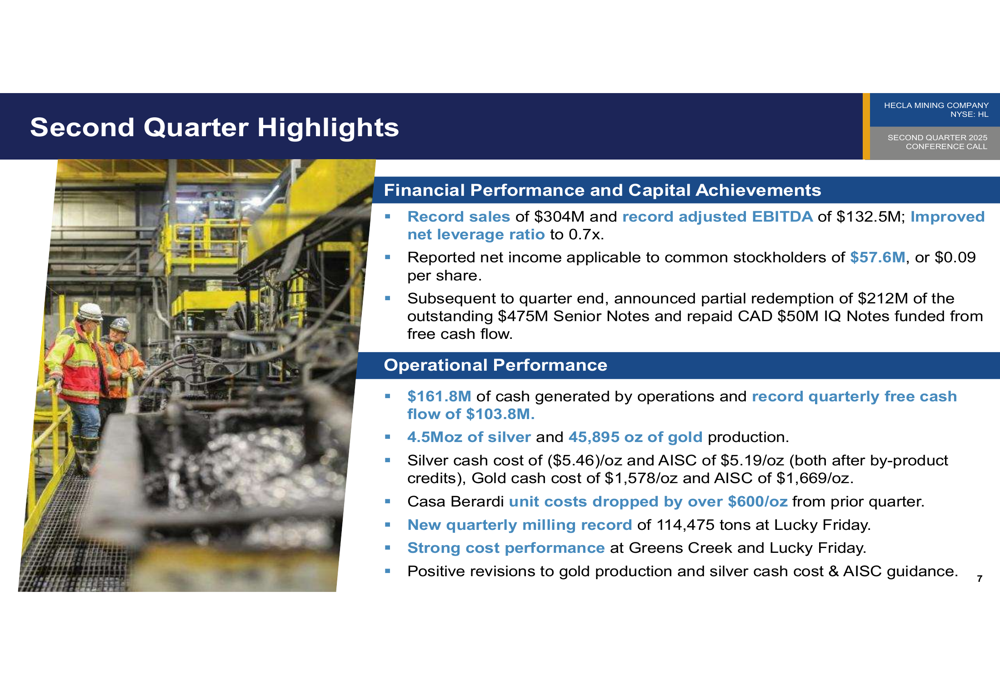
The company generated $161.8 million in cash from operations and achieved record quarterly free cash flow of $103.8 million. This strong cash generation enabled Hecla to improve its net leverage ratio to 0.7x from 1.5x in the prior quarter.
Financial Analysis & Debt Reduction
Hecla’s capital allocation strategy has focused heavily on debt reduction and balance sheet strengthening. Following the quarter end, the company announced a partial redemption of $212 million of its outstanding $475 million Senior Notes and repaid CAD $50 million in IQ Notes, funded entirely from free cash flow.
The company’s capital allocation achievements are illustrated in the following chart, which shows the contribution to free cash flow from each operation:
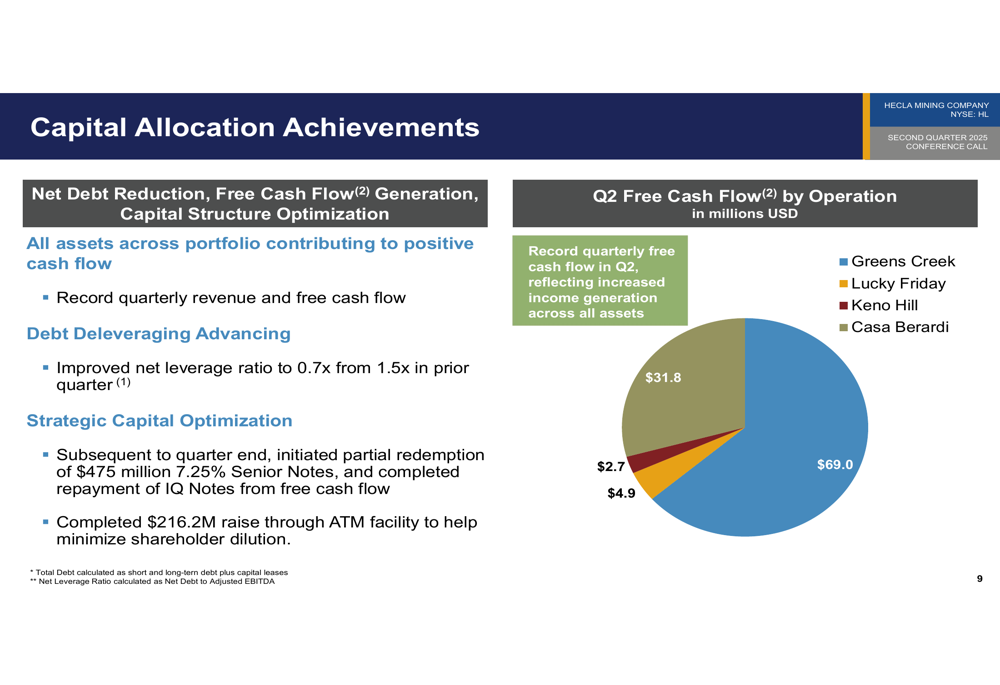
All assets across Hecla’s portfolio contributed to positive cash flow, with Greens Creek leading at $69.0 million, followed by Lucky Friday at $31.8 million. Notably, Keno Hill delivered $2.7 million in free cash flow, marking its first positive quarter under Hecla’s ownership.
The company’s revenue diversification and strong silver margins are highlighted in this financial summary:

Silver and gold each account for approximately 41-42% of revenues, with lead and zinc contributing the remainder. The company achieved an impressive Q2 silver margin of 85% of the silver price, demonstrating the profitability of its silver operations.
Strategic Shift at Keno Hill
A significant development in Hecla’s strategy involves its Keno Hill operation, where the company has revised its production target to 440 tons per day (TPD), down from the original 550-600 TPD baseline. This strategic shift is designed to optimize the operation while still meeting investment hurdle rates at $25/oz silver.
The following slide details the strategic shift in Keno Hill’s path forward:
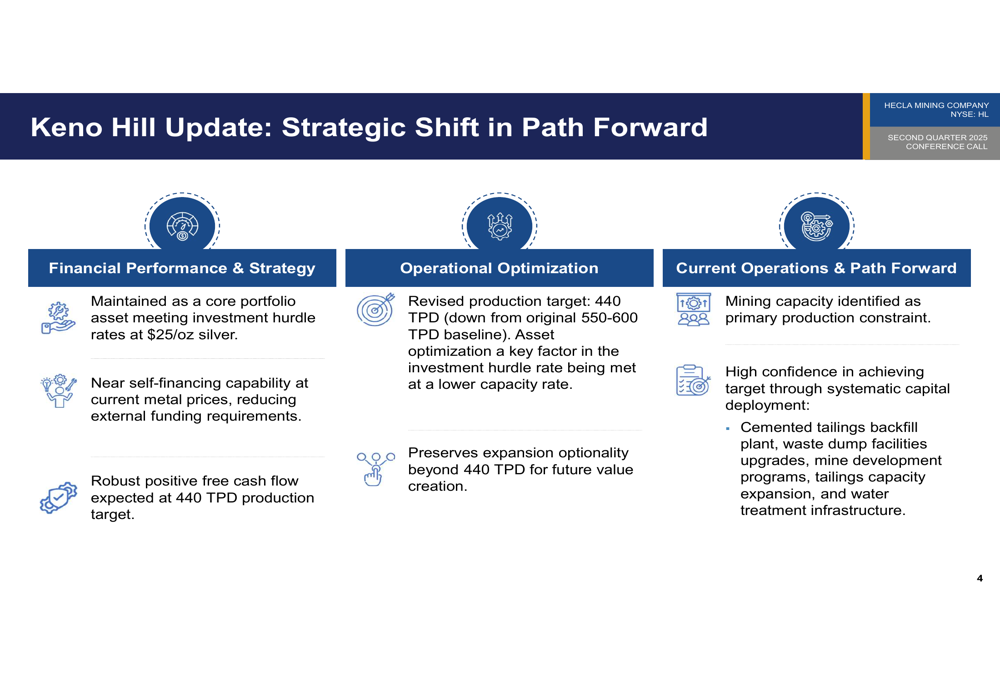
Despite the reduced production target, Hecla maintains that Keno Hill will generate robust positive free cash flow at the 440 TPD level. The company emphasized that the asset is near self-financing capability at current metal prices, reducing external funding requirements.
The economics of the revised plan are illustrated in this chart showing undiscounted annual cash flows and IRR at different silver prices:
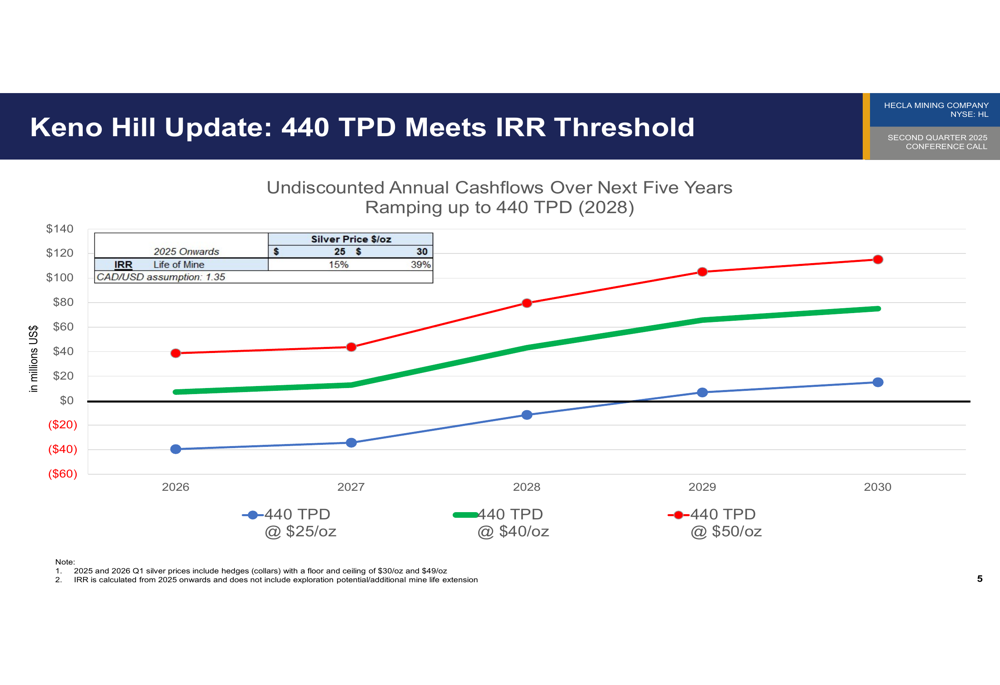
At $25/oz silver, the project achieves a 15% IRR, while at $30/oz, the IRR jumps to 39%. This demonstrates that even with the revised production target, Keno Hill remains economically viable and preserves expansion optionality for future value creation.
Operational Performance
Hecla’s cornerstone Greens Creek mine delivered solid free cash flow with Q2 silver production of 2.4 million ounces, a 21% increase from the prior quarter. Total (EPA:TTEF) cost of sales decreased by 15% to $58.9 million compared to Q1.
The Greens Creek performance metrics are shown here:
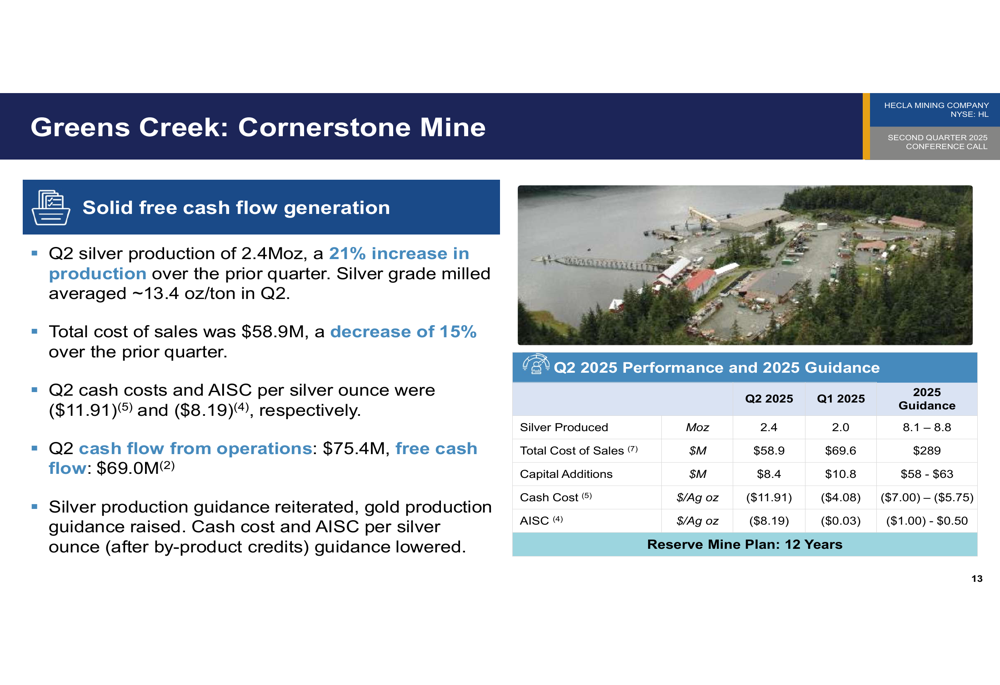
At Lucky Friday, the company achieved a new quarterly milling record of 114,475 tons while maintaining consistent silver production of 1.3 million ounces. Total cost of sales decreased by 4% to $42.3 million compared to the previous quarter.
The Lucky Friday performance is detailed in the following slide:

Casa Berardi’s unit costs dropped by over $600/oz from the prior quarter, with gold production increasing 37% to 28.1 thousand ounces, driven by higher underground and surface ore grades. The company continues to evaluate strategic alternatives for this asset as part of its portfolio rationalization efforts.
Competitive Industry Position
Hecla emphasized its unique position in the precious metals sector, highlighting its industry-leading reserve mine life and strong silver exposure. The company’s average reserve mine life of 14 years is double the industry peer average of 7 years, providing long-term operational visibility.
This competitive advantage is illustrated in the following comparison:
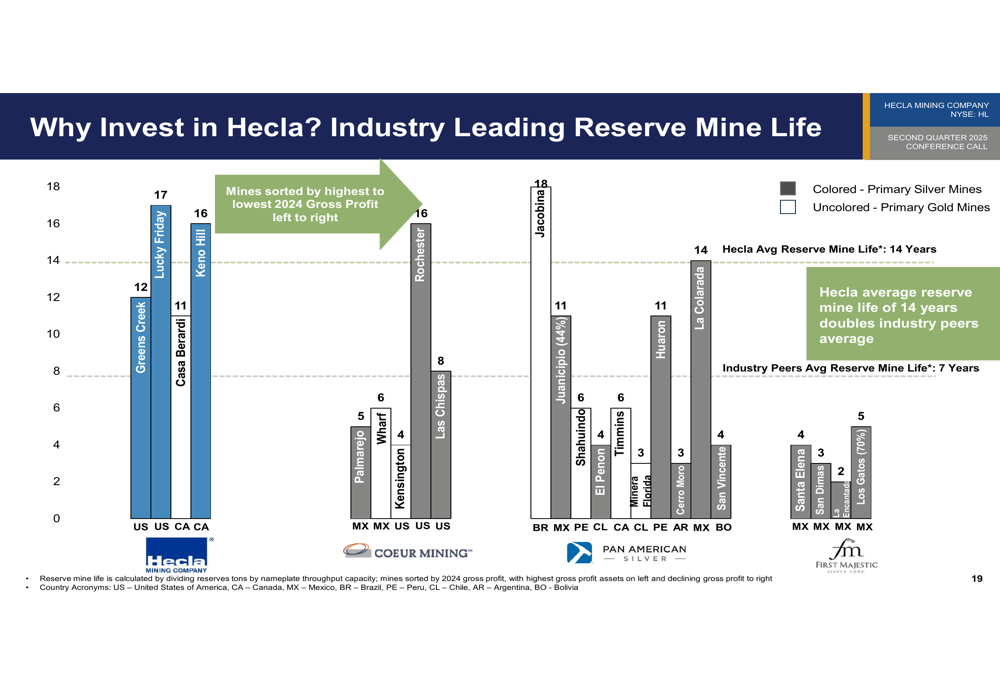
The company also highlighted its valuation relative to peers, noting that it trades at approximately $1.60 per silver equivalent ounce, the lowest among its peer group, and at approximately 1.30x NAV, at the low end of the peer range. This suggests potential for valuation expansion as the company continues to execute on its strategic initiatives.
Forward-Looking Statements
Hecla outlined four long-term strategic priorities: long-term value creation at Keno Hill with a focus on permitting and project execution; continued deleveraging with a focus on free cash flow generation; establishing a capital allocation framework ensuring organic investment; and portfolio rationalization at Casa Berardi, including evaluation of strategic alternatives.
The company also announced positive revisions to its gold production and silver cash cost and AISC guidance, reflecting confidence in its operational performance for the remainder of 2025.
Market reaction to Hecla’s strong quarterly results has been positive, with the stock trading up 19.39% at the time of this report, following a 13.75% gain in pre-market trading. This represents a significant recovery from the stock’s performance following Q1 results, when it dropped 12.43% in after-hours trading despite positive financial results.
Full presentation:
This article was generated with the support of AI and reviewed by an editor. For more information see our T&C.
